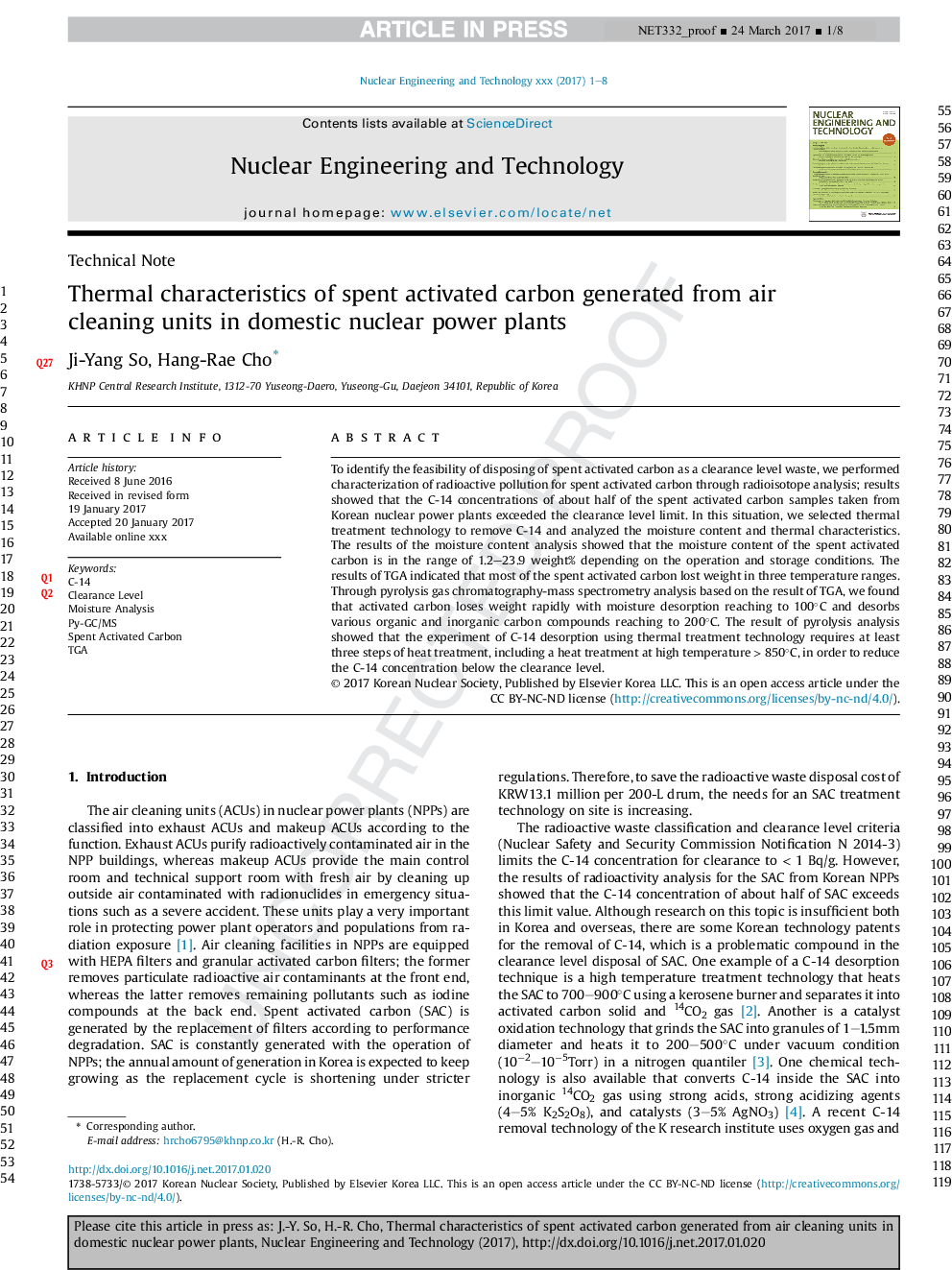| Article ID | Journal | Published Year | Pages | File Type |
|---|---|---|---|---|
| 5477968 | Nuclear Engineering and Technology | 2017 | 8 Pages |
Abstract
To identify the feasibility of disposing of spent activated carbon as a clearance level waste, we performed characterization of radioactive pollution for spent activated carbon through radioisotope analysis; results showed that the C-14 concentrations of about half of the spent activated carbon samples taken from Korean NPPs exceeded the clearance level limit. In this situation, we selected thermal treatment technology to remove C-14 and analyzed the moisture content and thermal characteristics. The results of the moisture content analysis showed that the moisture content of the spent activated carbon is in the range of 1.2-23.9 wt% depending on the operation and storage conditions. The results of TGA indicated that most of the spent activated carbon lost weight in 3 temperature ranges. Through py-GC/MS analysis based on the result of TGA, we found that activated carbon loses weight rapidly with moisture desorption reaching to 100°C and desorbs various organic and inorganic carbon compounds reaching to 200°C. The result of pyrolysis analysis showed that the experiment of C-14 desorption using thermal treatment technology requires at least 3 steps of heat treatment, including a heat treatment at high temperature over 850°C, in order to reduce the C-14 concentration below the clearance level.
Related Topics
Physical Sciences and Engineering
Energy
Nuclear Energy and Engineering
Authors
Ji-Yang So, Hang-Rae Cho,
